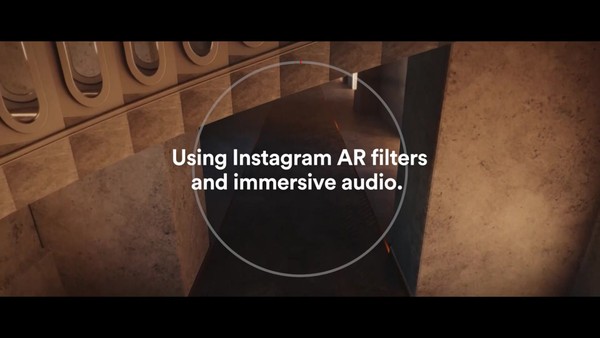Creative Data > Creative Data
CERTIFIED HUMAN
DENTSU CREATIVE, Chicago / INTEL / 2023
Awards:
Overview
Credits
OVERVIEW
Why is this work relevant for Creative Data?
Humanity is under threat. Misinformation in the form of deepfakes is wreaking havoc in media, business, and geopolitics - eroding our basic sense of truth. The number of deepfakes is doubling every six months, and up to 90% of online content will be synthetically generated by 2026.
To combat this threat, Intel had to transform its reputation from chip-maker to tech innovator, with a data-driven solution that enables global progress and promotes responsible AI.
Through the first-ever real-time deepfake detection system, Intel reclaimed relevance by arming the world with an AI solution that certifies the truth and, moreover, certifies humanity.
Background
The deepfake crisis has been exacerbated by generative AI—the sheer realism and volume of these videos are staggering. News outlets, social platforms, governments, and companies everywhere have no idea how to combat this new and complex issue.
Our challenge was to boost Intel’s reputation by highlighting how our Xeon processors and data-driven solutions help address the issue directly. Deepfakes rank as the most significant AI threat by tech researchers and policymakers. With these rapid advancements in generative AI, deepfakes are now imperceptible to the human eye.
Intel's real-time deepfake detection demonstrates to tech decision-makers our expertise in high-performance processors and innovative solutions that bolster safety, security, and transparency in an age of misinformation.
Objectives:
•Reinvigorate Intel’s reputation as a data-driven innovator
•Drive engagement with tech decision-makers
•Open the door to new customers by highlighting the power of Xeon
•Establish a new standard for truth in media for businesses
Describe the creative idea / data solution
The rise of generative AI coupled with the cascade of content across the internet has dramatically accelerated the threat of deepfakes. In fact, over 30,000 hours of video content is uploaded to the internet every hour, and over 90% of people globally feel that deepfakes are “accurate enough to fool anyone”. The confluence of this data reveals reveals the rapid pace at which fake but believable content can be deployed, blurring the line between fact and fiction to an extraordinary degree.
As a brand with a legacy for moving the computing world forward, Intel had to act with a solution that met this imposing threat with real time data and analysis. Other deepfake detection apps require uploading videos, then waiting hours for results, all while the harmful spread of misinformation continues.
Intel’s “Certified Human” is the world’s first technology platform that detects machine learning deepfakes in real time.
Describe the data driven strategy
Deepfake software is rapidly growing, becoming more sophisticated and accessible with few barriers to manage its spread. As the problem proliferates, businesses and organizations are depending on their CIOs, CTOs and tech decision-makers to explore solutions. Companies will spend a collective $188 billion in cybersecurity solutions in 2023, with expected rise to nearly $262 billion in global spending in 2026. However, many of these decision makers still think of Intel as purely a company that only makes microchips.
Our strategy was to introduce a new perspective on Intel: as a data-driven, solutions provider and innovator across the tech space. Our approach was to target high-profile companies’ cybersecurity and position Intel’s product innovation at the forefront, offering the most compelling proof of how Certified Human is improving the world precisely when we all need real, credible, and technical solutions to one of the most complex problems of our time.
Describe the creative use of data, or how the data enhanced the creative output
With the power of Xeon processors, Intel’s real-time detection can see what the eye cannot. While other deep learning-based detectors look at raw data to find signs of inauthenticity and identify what’s wrong with a video, Intel’s technology looks for authentic clues by accessing the subtle blood flow in the pixels of a video. When our hearts pump blood, oxygen levels in our skin tones change color ever so slightly—which even the most advanced deepfakes cannot replicate. These blood flow signals are collected from all over the face and the FakeCatcher algorithm translates these signals into spatiotemporal maps. Using Intel’s processors' massive computing power, videos are analyzed at the pixel level, enabling AI and machine learning to instantly certify what’s human and what’s not.
The tech is currently being deployed for a cyber security firm, their fortune 500 clients, and a integration with a major news media platform in advance of the 2024 Elections.
List the data driven results
Intel's deepfake detection has proven to be a formidable weapon—with the power to analyze over 72 videos at the same time with 96% accuracy. Our content highlighting the technology produced 72% more organic shares per post and 56% more organic engagements among our social community.
Moreover, 88% of tech decision-makers now credit Intel for providing innovative solutions, directly deterring the perception that Intel only makes microchips. We also ignited the sales pipeline and opened new verticals via partnerships cyber security firms. Conversations are actively happening with traditional and social media outlets to integrate this technology into everyday editorial operations to fight misinformation more responsibly and effectively.
Intel’s real-time deepfake detection provides an important step to staying ahead of generative AI and harmful deepfakes. A stronger foundation for rebuilding the very concepts of truth and trust. And a path forward to ensure we are all Certified Human.
More Entries from Data Technology in Creative Data
24 items
More Entries from DENTSU CREATIVE
24 items










